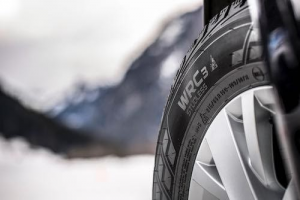Driving during spring can be challenging as you have changing weather conditions as it is going from cold weather to warm and there might be a lot of melting snow and slush present on the roads, you can also have returning winter weather or snowstorms coming with short notice. Slush creates very difficult conditions, as the tires will need to remove the slush layer from the streets to ensure that the tires remain in contact with the road surface.
When you have snow or slush you will need to have winter tires or at least tires that are approved for winter use that in addition to the normal winter tires also known as snow tires, you also have all-weather tires. You should under no circumstances drive with all-season tires when you have winter conditions or when there is a snowstorm approaching.
Once the snow has melted and there is no more slush or ice present, then you can drive safely with all-season tires. With this logic it is therefore safer to wait a bit until you change back to all-season tires, especially if you are very dependent on your car for daily use.
When it rains is associated with some dangers; the biggest risk is that the water on the road can cause aquaplaning of the car, where the tires lose contact with the road surface and glide on top of the water. This is a scary condition, as you lose all control over the vehicle. It can therefor also be dangerous, as you can easily get into an accident when you don’t have any control.
How to avoid aqua- or slushplaning?
There are a few ways to reduce the chance of aquaplaning. First of all, you need good quality premium tires, and you need to have a tread depth of at least 5/32 inches. With reduced tread depth the chance of aqua- or slushplaning increases.
Select tiresthat are known for its performance in wet conditions for all-season tires and for slush for the winter approved tires. All-season tires should state that they are good at preventing aquaplaning, as the tread has been specially designed for being able to channel away water from the surface.
By limiting the speed according to the circumstances, you can reduce the chance of it happening. Speed has a big impact on the likelihood, so lower speed is always to prefer.
How to act when aqua- or slushplaning happens?
The best way to get out of aqua- or slushplaning is to just take the foot of the gas pedal and wait for the tires to gain traction again. Do not make big movements with the steering wheel, as you don’t want to cause big change of direction when the tires get traction.
These conditions can more or less be avoided if you follow the above steps, select a high-quality tire, make sure that is designed to prevent aquaplaning, limit your speed and make sure that the tread depth is above 5/32 inches. If you have all these boxes checked, you should be able to drive safely even if it rains.
For more information regarding tires that are designed to prevent aquaplaning, visit: www.nokiantires.com

